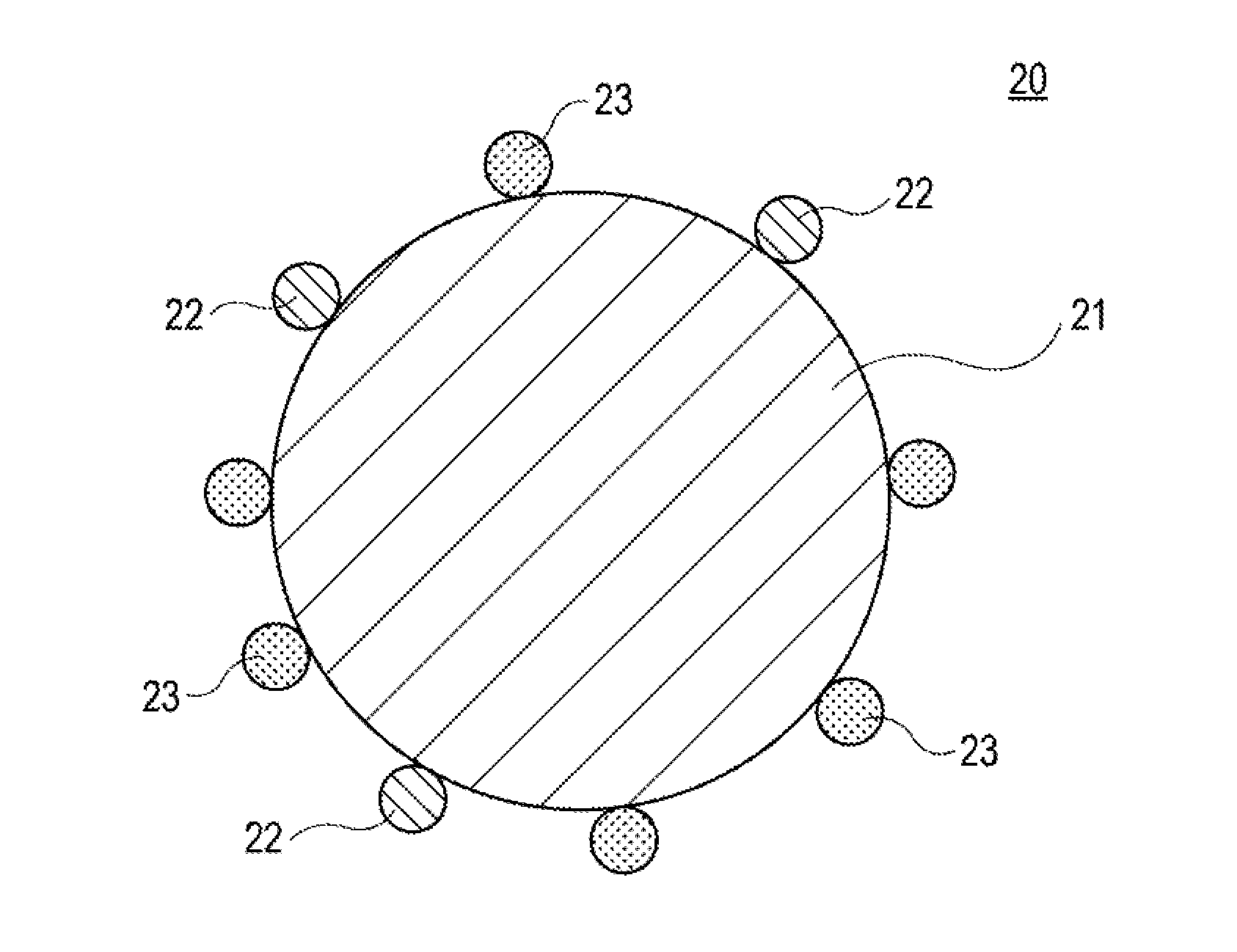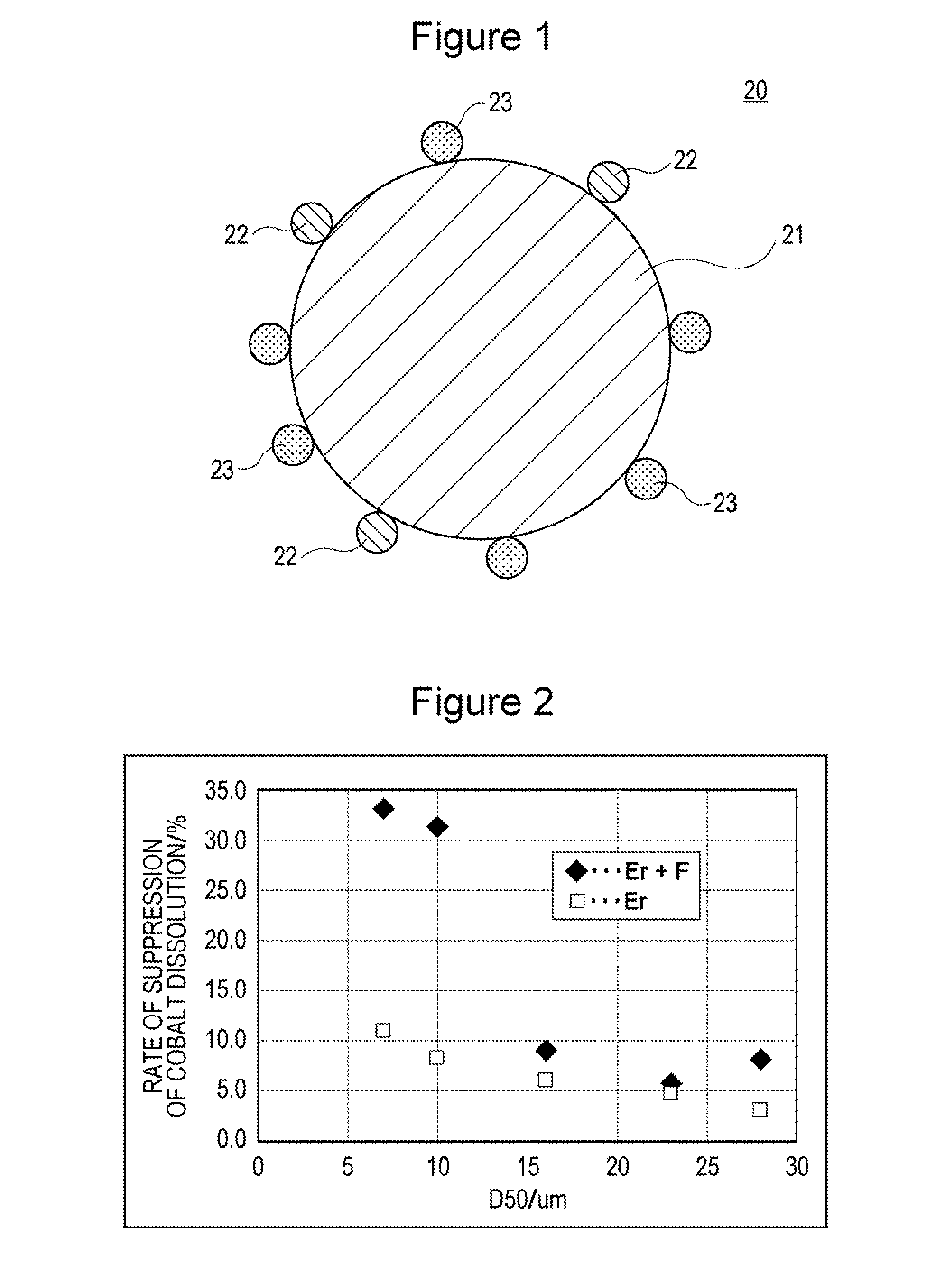Positive electrode active material for nonaqueous electrolyte secondary battery and positive electrode for nonaqueous electrolyte secondary battery
a technology of nonaqueous electrolyte and active material, which is applied in the direction of lanthanide oxide/hydroxide, cell components, electrochemical generators, etc., can solve the problems of increasing the probability of electrolyte decomposition and reducing the discharge capacity
- Summary
- Abstract
- Description
- Claims
- Application Information
AI Technical Summary
Benefits of technology
Problems solved by technology
Method used
Image
Examples
examples
Experiment 1
[Production of Positive Electrode]
[0040]500 g of lithium cobaltate particles (average particle diameter: 7 μm) in which 1.5% by mole of Mg and 1.5% by mole of Al with respect to the lithium cobaltate were present in the form of solid solution were prepared. The lithium cobaltate particles were added to 1.5 L of pure water, and then an aqueous solution prepared by dissolving 1.13 g of erbium nitrate pentahydrate (Er(NO3)3.5H2O) in 100 mL of pure water was added thereto under stirring. In this case, a 10% by mass aqueous sodium hydroxide solution was appropriately added such that the pH of the resulting solution became 9 (the pH was maintained at 9) to thereby allow erbium hydroxide to adhere to the surface of the lithium cobaltate particles. The resultant solution was subjected to suction filtration to collect the treated product, and the treated product was dried at 120° C. to thereby obtain lithium cobaltate particles with the erbium hydroxide adhering to and dispersed ...
experiment 2
[0047]A battery A2 was produced in the same manner as in experiment 1 except that lithium cobaltate (average particle diameter: 10 μm) was used for the positive electrode active material.
experiment 3
[0048]A battery B1 was produced in the same manner as in experiment 1 except that lithium cobaltate (average particle diameter: 16 μm) was used for the positive electrode active material.
PUM
| Property | Measurement | Unit |
|---|---|---|
| average particle diameter | aaaaa | aaaaa |
| particle diameter | aaaaa | aaaaa |
| particle diameter | aaaaa | aaaaa |
Abstract
Description
Claims
Application Information
 Login to View More
Login to View More - R&D
- Intellectual Property
- Life Sciences
- Materials
- Tech Scout
- Unparalleled Data Quality
- Higher Quality Content
- 60% Fewer Hallucinations
Browse by: Latest US Patents, China's latest patents, Technical Efficacy Thesaurus, Application Domain, Technology Topic, Popular Technical Reports.
© 2025 PatSnap. All rights reserved.Legal|Privacy policy|Modern Slavery Act Transparency Statement|Sitemap|About US| Contact US: help@patsnap.com


